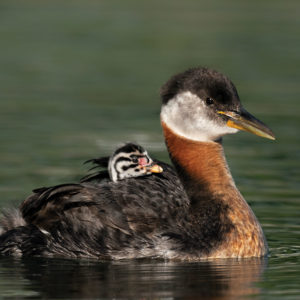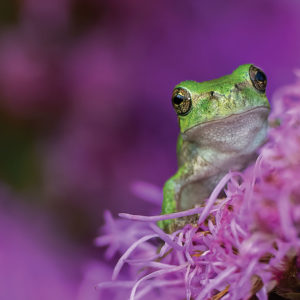Discover the Atlantic Puffin
This month’s Nature Canada calendar shows you why this beautiful resident of eastern Canada is near the top of every birder’s list.
Where do they live?
The Atlantic Puffin (Fratercula arctica), sometimes referred to as the Common Puffin, is found on the North Atlantic shorelines in breeding season, and moves in the winter out to the open Atlantic, always south of the icepack, and sometimes as far south as New York.
What do they look like?
The Atlantic Puffin is a small, duck-like bird: 30 cm in length with a 50 cm wingspan and weighing 380 g. Males and females are similar in appearance, with a black body, a white chest and orange legs. Its most remarkable features are the red and black markings around the eyes and the large and colourful beak on a white face. The beak is red, yellow and orange in the breeding season; it is shed to reveal a duller beak in winter.
What do they eat?
The young are fed sand lance, herring, capelin, cod and other small fish. Adults forage at sea for fish and crustaceans within 15 m of the surface.
How do they reproduce?
The Atlantic Puffin is solitary in winter; in breeding season, however, they are gregarious, forming huge colonies. They form monogamous pairs after a courtship display with their colourful beaks. Nests are in long burrows in rock crevices or under rocks along shorelines. These are reused year after year by the same pair. Usually, only one egg is laid. Both parents take turns incubating the egg over 36-44 days, and both feed the nestling (sometimes referred to as “puffling”). Initially, they feed small fish directly to the young; as they get older, the parent drops the fish on the nest floor. The young leave the nest 38-44 days after they hatch and fly out to sea.
Breeding first occurs between three to six years of age.
Puffins are reported to live for approximately 20 years in the wild.
Interesting stuff
- The Atlantic Puffin is the official bird of Newfoundland and Labrador. This province has ~95% of all North America’s breeding areas. The largest puffin colony in the Western Atlantic is in Newfoundland, at the Witless Bay Ecological Reserve.
- Unlike other seabirds that regurgitate caught fish for their young, the Atlantic Puffin carries the fish whole to their nestlings.
- Puffins can capture and carry many small fish at a time. Two important features make this possible: the serrated beaks have a hinge that allows the top and bottom halves to meet at different angles, and the rough tongue can hold the fish against the palate while it opens the beak to catch more fish.
- Puffins can swim under water for up to a minute at a time, using their wings as fins and feet as rudders.
In the past, the Atlantic Puffin and their eggs were a food source, and their skins, with feathers intact, were traditionally sewn together to make a waterproof cloak or coat. Today, puffin populations are threatened by pollution and overfishing that endanger their food source, invasive predators, and the warming trends in climate changes that affect their breeding success. You can enjoy these delightful birds in protected areas like the Witless Bay Ecological Reserve; you can also ensure that future generations will enjoy them as well by supporting conservation efforts to protect the Atlantic Puffin habitat and food sources.
Stay up to date with the latest in Canadian nature by subscribing to our emails. You’ll receive regular updates about what we’re doing to protect wildlife like the Atlantic Puffin — and how you can help.



